Embry-Riddle Students Share Research With Community at Museum Event
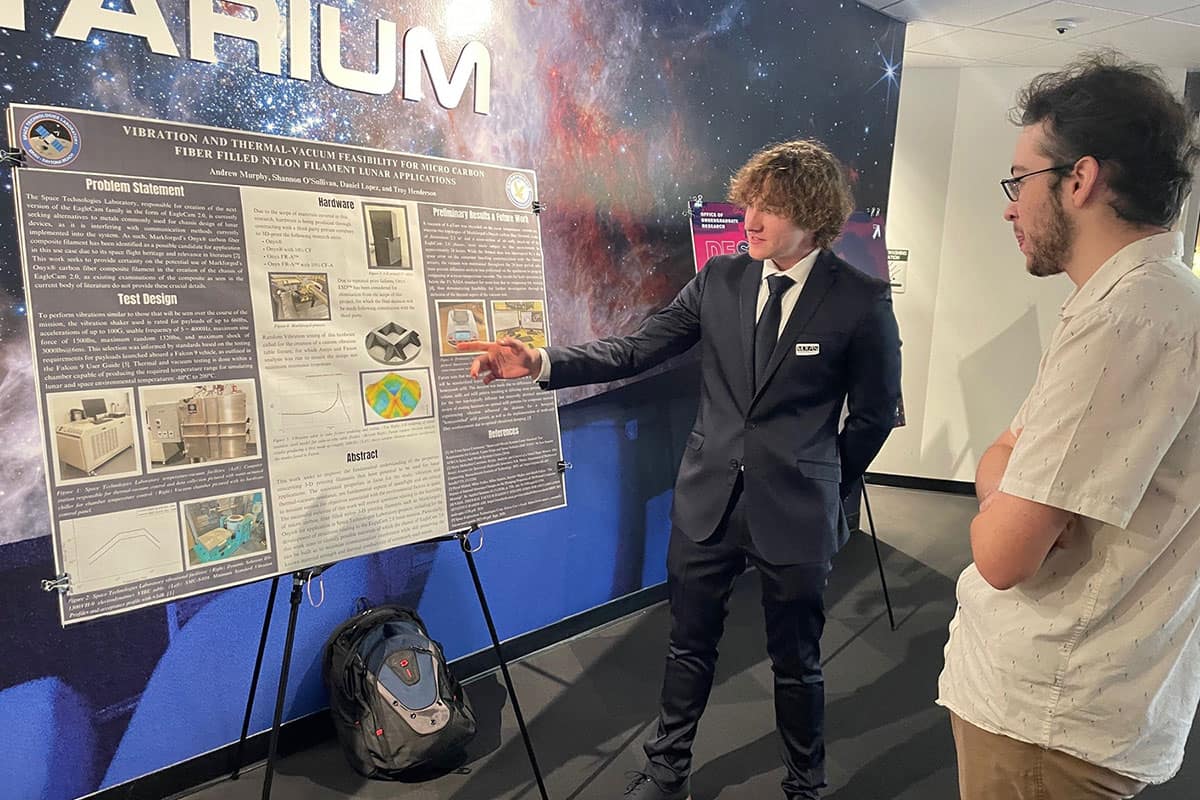
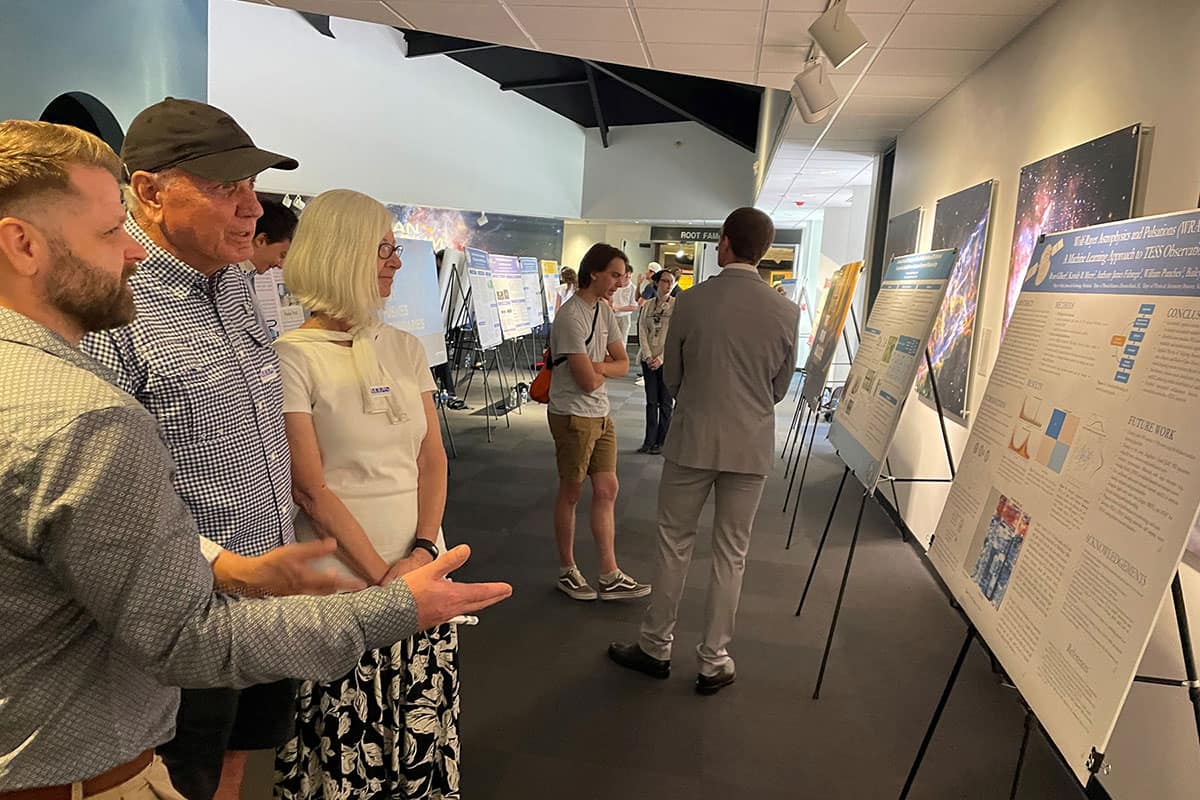
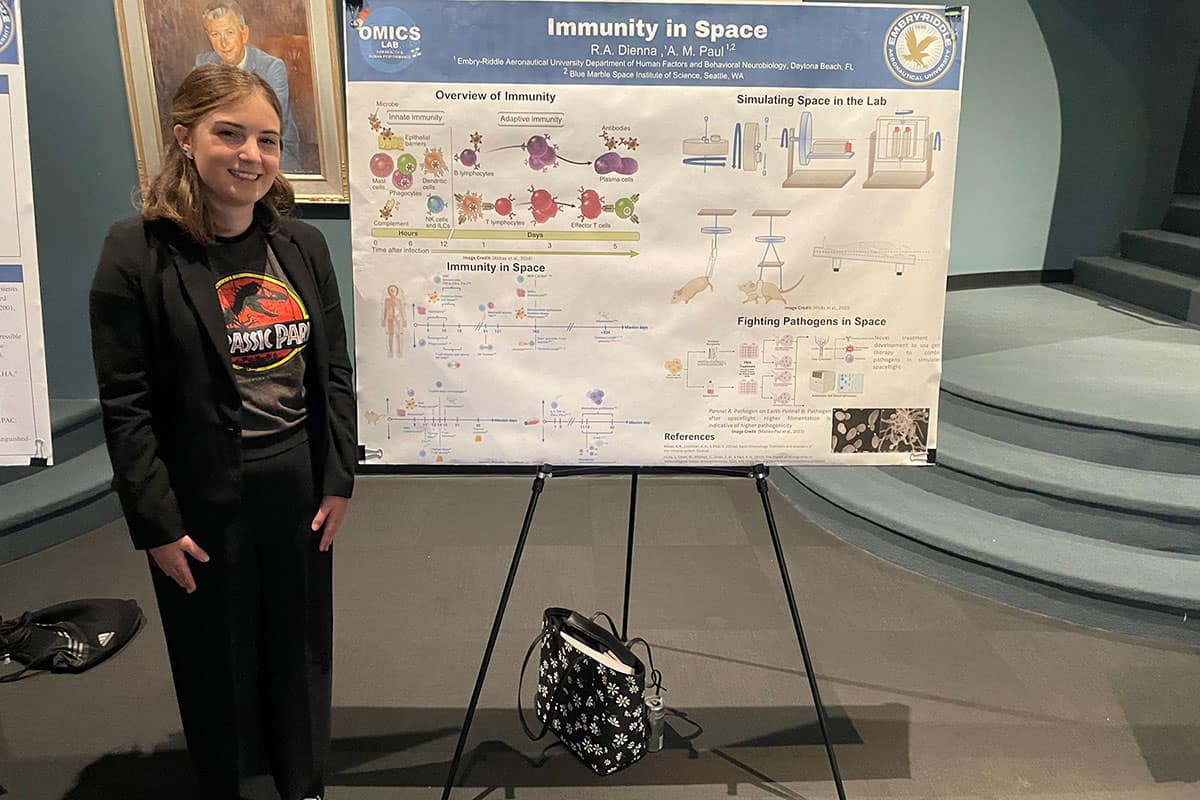
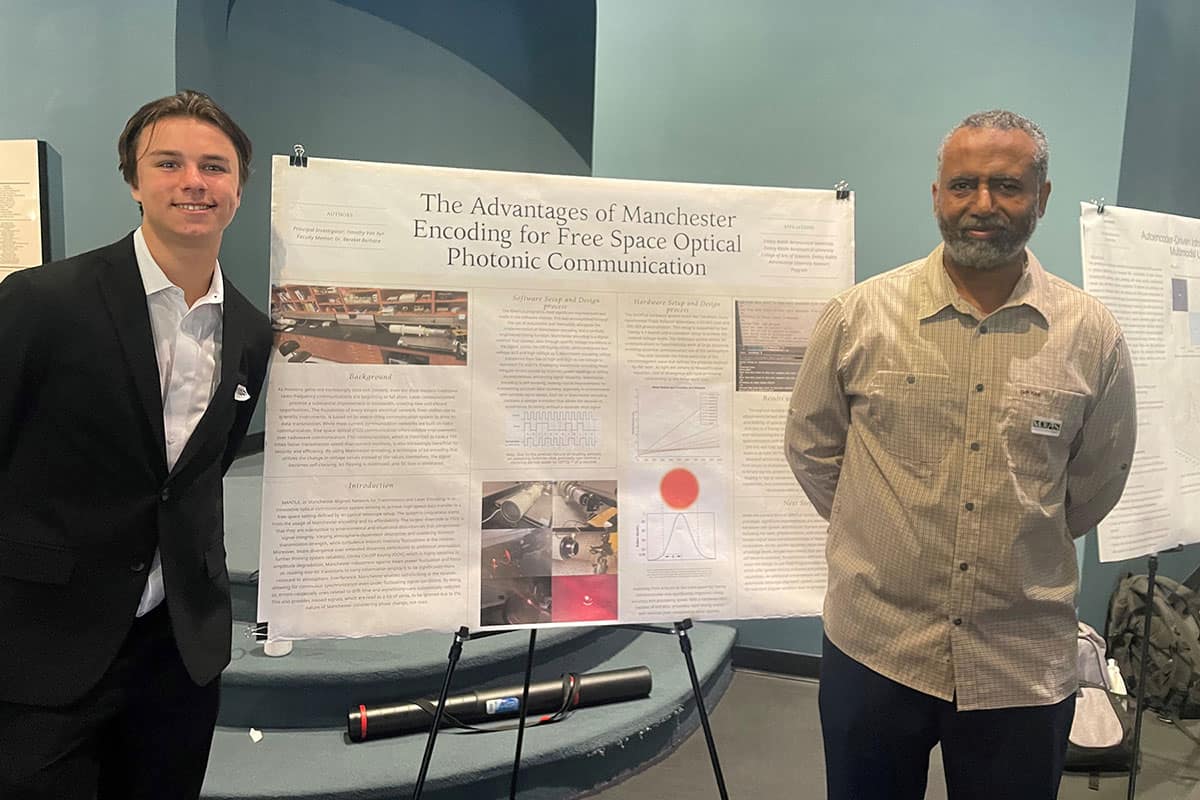
More than 70 students shared their research with the Daytona Beach community at the inaugural Embry-Riddle Undergraduate Research Showcase at the Museum of Arts and Sciences.
“This is a big effort to bring more engagement over the summer and to showcase to the public what Embry-Riddle is doing,” said Dr. Mihhail Berezovski, director of the Office of Undergraduate Research (OUR) and associate professor of Mathematics.
Aerospace Physiology student Riley Dienna wore her Jurassic Park t-shirt and dinosaur-themed Converse shoes to present her research, which involves genetic engineering, at the event. Working in the Omics Lab for Health and Human Performance, Dienna said her research involves genetically engineering human monocyte cells to fight fungal pathogens more effectively.
“I’m very passionate about sharing science,” said Dienna. “And I’ve enjoyed hearing perspectives from the community and other fields at this event.”
Volusia County residents and tourists visiting the museum mingled with students explaining their research. The public event, held July 19, featured 44 research poster presentations by students engaged in summer research at the university.
“This event is wonderful,” said Carol Van Ryn, a Daytona Beach resident who attended the research showcase. “These students really nailed it. They’re thinking outside the box.”
Some students received Summer Undergraduate Research Fellows (SURF) grants from the university’s Office of Undergraduate Research, while other students were participants in an intensive 10-week Interdisciplinary Research Experiences for Undergraduates (REU) program at Embry‑Riddle’s Daytona Beach Campus.
Dr. Laxima Niure Kandel, assistant professor in the Department of Electrical Engineering and Computer Science, is leading a National Science Foundation-funded REU focusing on Uncrewed Aerial Vehicles (UAV) cybersecurity research this summer. Several of her students presented at the event. The undergraduate students, chosen from around the country, are spending 10 weeks working full-time on individual cybersecurity research projects at Embry-Riddle.
“This is a great event,” said Kandel. “I think one of the most important skills students get is explaining complex ideas in plain language that everyone understands.”
Students Gain Experience Presenting on the Public Stage
Worldwide Campus student Ryan Gilbert came all the way to Daytona Beach from his home in Texas to share his research on behalf of his multi-campus team.
“I’m very grateful to be here for this opportunity,” said Gilbert, who is pursuing his Bachelor of Science in Engineering Technology. “It has been a collaborative effort, and I’m proud to represent my team on this research.”
The event was the first time he presented his project, which was a collaborative effort with faculty and students from the Worldwide, Daytona Beach and Prescott campuses. The research, which uses data from NASA, uses applied machine learning and astrophysical modeling to classify and analyze variability in Wolf-Rayet stars.
Gilbert worked on the project with students Kassidy B. Myers from the Daytona Beach Campus and Anthony James Fabrega, William Punches and Bailey Wolf from the Prescott Campus.
“We all had different roles. I developed machine learning algorithms,” said Gilbert, who was the student lead on the project. “Zoom meetings are mainly how we met.”
The project’s faculty mentors included Dr. Saida Caballero-Nieves from the Daytona Beach Campus, Dr. Noel D. Richardson from the Prescott Campus and Dr. Christina Reynolds from the Worldwide Campus.
“Dr. Reynolds is one of the reasons I love Embry-Riddle so much,” said Gilbert. “She was my physics teacher and invited me to assist on this project.”
Timothy Van Ryn, a sophomore Honors Program student majoring in Engineering Physics, said he was excited to present his research publicly for the first time. His project, dubbed COSMOS, strives to create an optical communication system that can be used in ground station-to-satellite communication and message encryption.
“It’s exhilarating,” he said. “I believe deeply in applied physics, and it’s been very rewarding to share my research with people. I’ve also learned how to present myself and be more professional.”
Dr. Bereket Berhane, associate professor and associate chair of the Department of Physical Sciences, is Van Ryn’s mentor. Berhane believes the research showcase benefits students in several ways.
“It lets them gain confidence, especially for students like Tim who want to continue doing research,” said Berhane. “Additionally, it helps them communicate the benefits of their research to the community in a way that the public can understand it.”

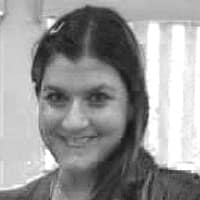 Melanie Stawicki Azam
Melanie Stawicki Azam